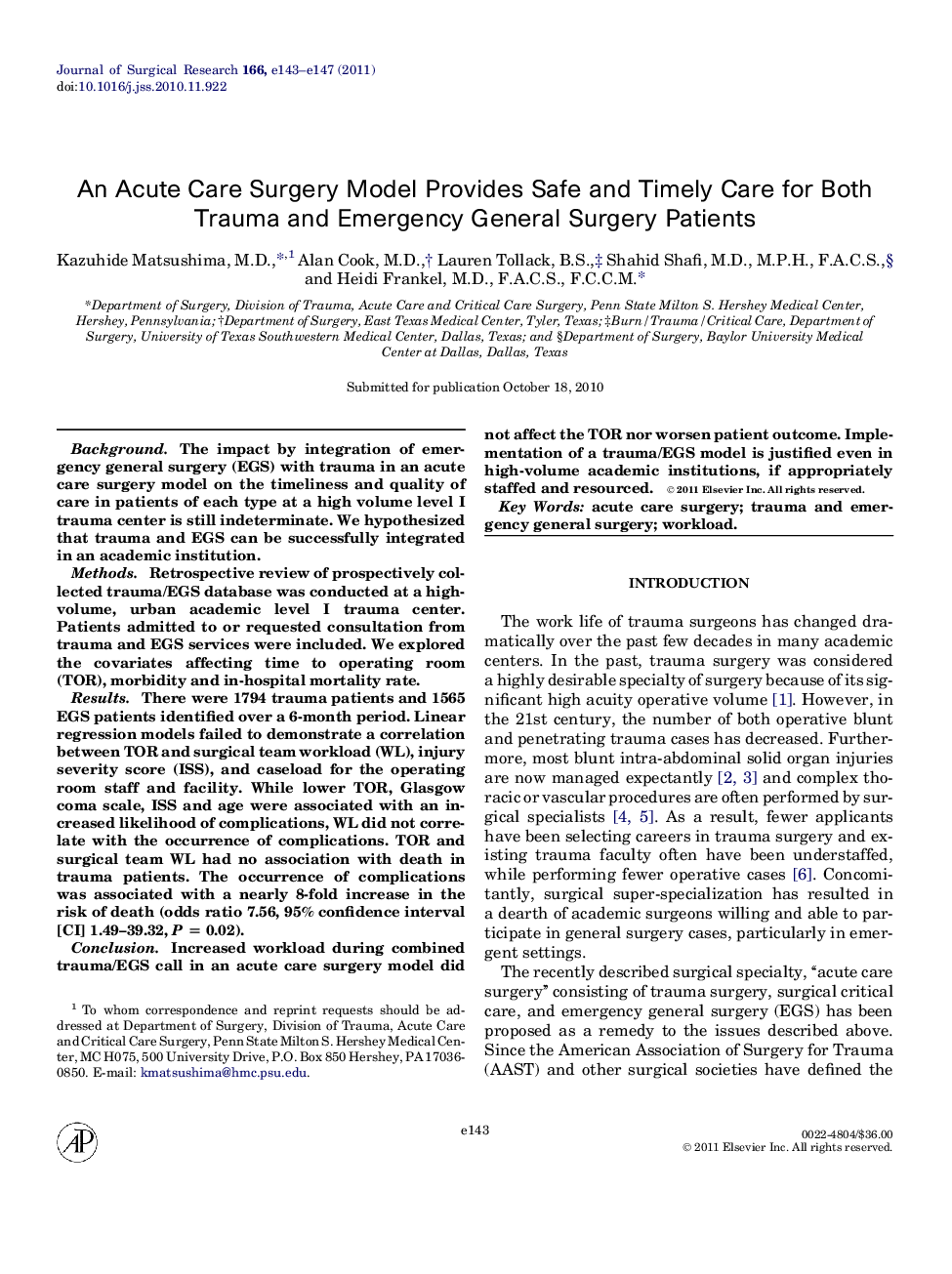| Article ID | Journal | Published Year | Pages | File Type |
|---|---|---|---|---|
| 4302988 | Journal of Surgical Research | 2011 | 5 Pages |
BackgroundThe impact by integration of emergency general surgery (EGS) with trauma in an acute care surgery model on the timeliness and quality of care in patients of each type at a high volume level I trauma center is still indeterminate. We hypothesized that trauma and EGS can be successfully integrated in an academic institution.MethodsRetrospective review of prospectively collected trauma/EGS database was conducted at a high-volume, urban academic level I trauma center. Patients admitted to or requested consultation from trauma and EGS services were included. We explored the covariates affecting time to operating room (TOR), morbidity and in-hospital mortality rate.ResultsThere were 1794 trauma patients and 1565 EGS patients identified over a 6-month period. Linear regression models failed to demonstrate a correlation between TOR and surgical team workload (WL), injury severity score (ISS), and caseload for the operating room staff and facility. While lower TOR, Glasgow coma scale, ISS and age were associated with an increased likelihood of complications, WL did not correlate with the occurrence of complications. TOR and surgical team WL had no association with death in trauma patients. The occurrence of complications was associated with a nearly 8-fold increase in the risk of death (odds ratio 7.56, 95% confidence interval [CI] 1.49–39.32, P = 0.02).ConclusionIncreased workload during combined trauma/EGS call in an acute care surgery model did not affect the TOR nor worsen patient outcome. Implementation of a trauma/EGS model is justified even in high-volume academic institutions, if appropriately staffed and resourced.
